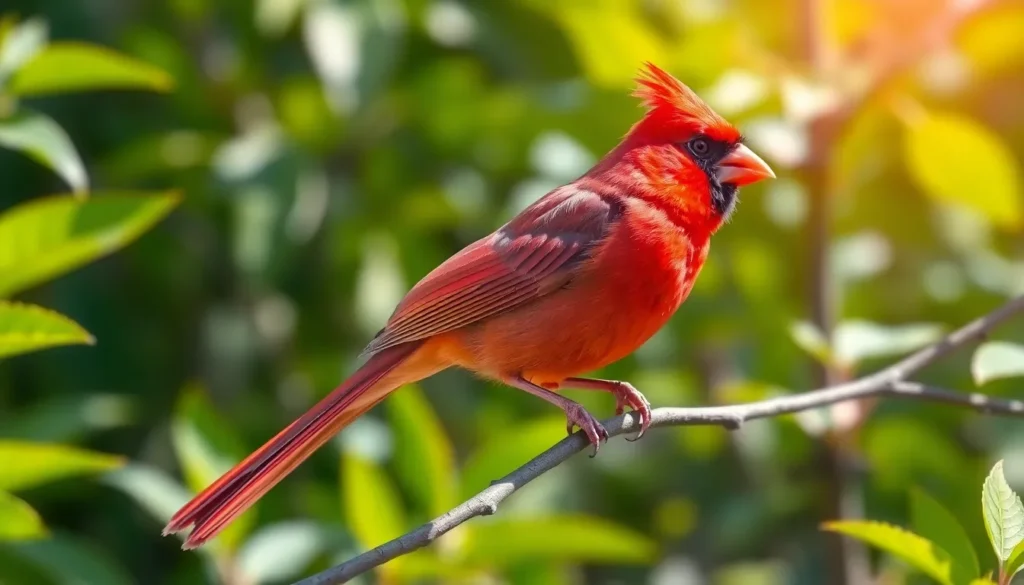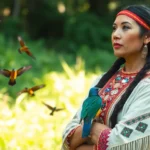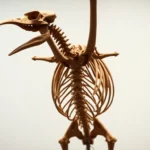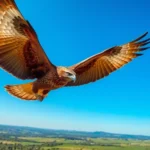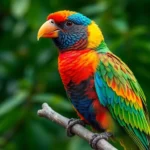When we spot a flash of crimson soaring through our backyards, we’re witnessing one of nature’s most captivating displays. Red birds have fascinated humans for centuries with their brilliant plumage and distinctive behaviors that make them stand out from countless other species.
We’ve all wondered about these striking creatures – whether it’s the iconic Northern Cardinal brightening our winter mornings or the vibrant Summer Tanager adding tropical flair to our landscapes. These remarkable birds aren’t just beautiful; they’re essential players in our ecosystems and hold deep cultural significance across many societies.
From their unique feeding habits to their fascinating mating rituals, red birds offer endless opportunities for discovery and appreciation. We’ll explore everything you need to know about these magnificent creatures, helping you identify common species, understand their behaviors, and create the perfect environment to attract them to your own outdoor spaces.
What Is a Red Bird?
Red birds represent a diverse group of avian species characterized by their vibrant crimson, scarlet, or rust-colored plumage. These striking creatures cover multiple bird families and species across North America, with each displaying unique variations of red coloration patterns.
The term “red bird” commonly refers to several distinct species including the Northern Cardinal, Summer Tanager, Scarlet Tanager, and Red-winged Blackbird. Cardinals showcase brilliant red feathers covering their entire body, while tanagers display varying degrees of red mixed with other colors. Male specimens typically exhibit more intense red coloration than females, particularly during breeding seasons.
Geographic distribution of red birds spans diverse habitats from woodlands to suburban gardens. Northern Cardinals inhabit eastern North America from Canada to Central America, thriving in brushy areas and forest edges. Summer Tanagers prefer mature forests across the southeastern United States, migrating to Central and South America during winter months.
Red pigmentation in these birds stems from carotenoid compounds obtained through their diet. Seeds, fruits, and insects containing these natural pigments contribute to the vibrant red hues we observe in their feathers. Cardinals consume sunflower seeds, berries, and insects, while tanagers feed primarily on insects and fruits rich in carotenoids.
Physical characteristics vary significantly among red bird species. Male Northern Cardinals measure 8.5 to 9 inches in length with distinctive crests and black facial markings around their orange-red bills. Summer Tanagers reach 6.7 inches in length, displaying solid red plumage without crests or facial markings.
Behavioral patterns distinguish different red bird species through their feeding habits and social structures. Cardinals form monogamous pairs and maintain territories year-round, while tanagers exhibit more migratory behaviors and different social dynamics during breeding seasons.
Most Common Red Bird Species
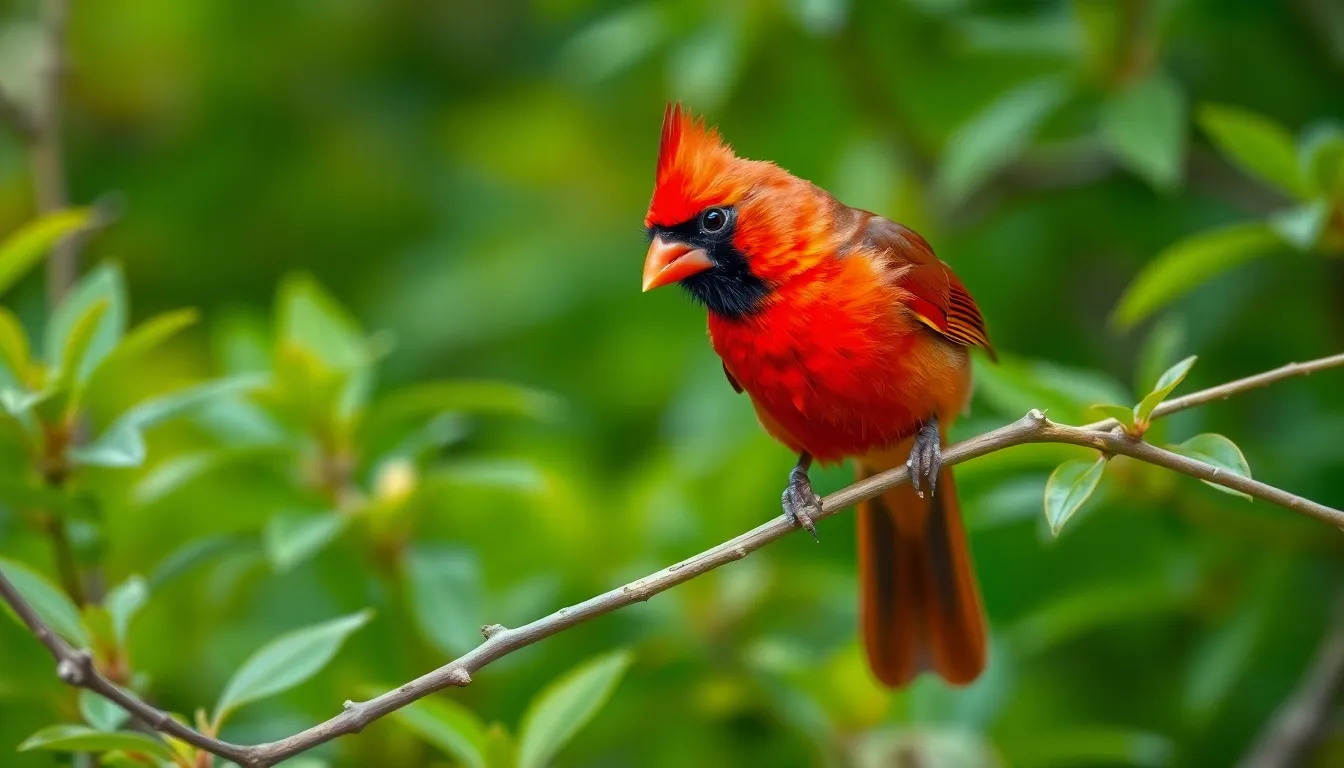
We encounter four primary red bird species across North America, each displaying distinct characteristics and habitat preferences. These vibrant creatures represent the most recognizable members of our continent’s red feathered population.
Northern Cardinal
Northern Cardinals dominate eastern and central North American landscapes from southern Canada to Guatemala. Males showcase brilliant red plumage with distinctive black masks around their eyes and throats, while females display warm brown coloring with red tinges on wings, tail, and crest. Cardinals maintain permanent residences year round, preferring woodland edges, gardens, shrublands, and wetlands.
Cardinals consume approximately 30% seeds and 70% insects during breeding season, switching to predominantly seed based diets in winter months. These birds form monogamous partnerships lasting entire breeding seasons and sometimes multiple years. Breeding pairs establish territories spanning 2 to 10 acres, defending these areas against intruders through aggressive displays and vocalizations.
Adult Cardinals measure 8.5 to 9 inches in length with wingspans reaching 10 to 12 inches. Their thick, cone shaped bills enable efficient seed cracking, particularly sunflower seeds and safflower seeds. Cardinals produce 2 to 4 broods annually from March through August, laying 3 to 4 eggs per clutch.
Summer Tanager
Summer Tanagers inhabit mature deciduous and mixed forests throughout the southeastern United States during breeding season. Males exhibit solid rose red coloration across their entire bodies, lacking the black markings found on Cardinals. Females display yellow green plumage with orange tinges on wings and tails, providing effective camouflage during nesting periods.
These tanagers specialize in bee and wasp consumption, capturing up to 600 insects daily during peak feeding periods. Summer Tanagers migrate to Central and South America from September to March, traveling distances exceeding 2,000 miles. Breeding territories typically cover 1 to 3 acres within oak hickory forests and pine oak woodlands.
Adult Summer Tanagers measure 6.7 to 7.5 inches in length with wingspans spanning 11 to 12 inches. Their sturdy bills allow efficient insect capture and fruit consumption. Breeding occurs from May through July, with females constructing shallow cup nests 10 to 35 feet above ground level.
Scarlet Tanager
Scarlet Tanagers populate mature deciduous forests across eastern North America during breeding months. Males display vibrant scarlet bodies contrasting with jet black wings and tails, creating one of nature’s most striking color combinations. Females exhibit yellow green coloration similar to Summer Tanagers but maintain darker wings and more subdued tones overall.
Scarlet Tanagers consume primarily caterpillars, beetles, and moths during breeding season, switching to fruit consumption during migration periods. These birds migrate to South American rainforests from October to April, covering distances up to 3,000 miles. Breeding territories average 1.5 to 6 acres within oak maple and beech forests at elevations between 1,000 and 3,000 feet.
Adult Scarlet Tanagers measure 6.3 to 6.7 inches in length with wingspans reaching 9.8 to 11.4 inches. Their bills feature slight hooks enabling effective insect capture from tree bark and foliage. Nesting occurs 20 to 75 feet above ground on horizontal branches, producing single broods annually from May through June.
Red-winged Blackbird
Red winged Blackbirds thrive in wetland environments including marshes, swamps, and cattail stands throughout North America. Males showcase glossy black plumage with bright red shoulder patches bordered by yellow stripes, particularly prominent during territorial displays. Females display heavily streaked brown plumage resembling large sparrows, providing excellent camouflage among marsh vegetation.
Red winged Blackbirds consume seeds, grains, and insects in roughly equal proportions throughout the year. Males establish territories encompassing 0.25 to 0.5 acres within prime wetland habitat, attracting multiple females to polygamous breeding arrangements. These birds form massive flocks containing thousands of individuals during winter months, roosting communally in agricultural areas.
Adult Red winged Blackbirds measure 6.7 to 9.1 inches in length with wingspans spanning 12.2 to 15.8 inches. Their pointed bills enable efficient foraging in mud and shallow water for aquatic insects and seeds. Breeding extends from March through August, producing 2 to 3 broods annually with 3 to 5 eggs per nest constructed among cattails and reeds.
Physical Characteristics of Red Birds
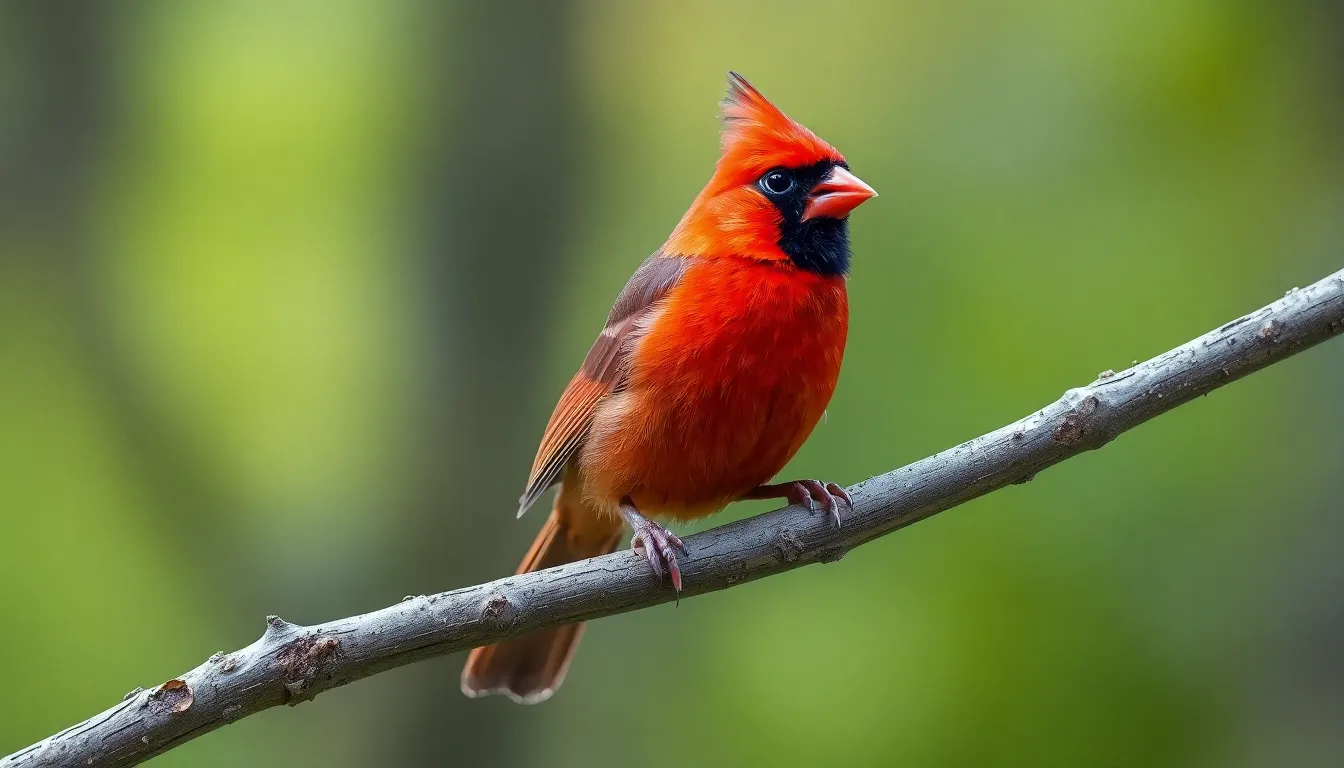
Red birds display remarkable physical variations that distinguish them from other avian species and create stunning visual displays in natural habitats. Their distinctive features include size differences, coloration patterns, and specialized anatomical structures that serve exact biological functions.
Male vs Female Coloration
Male red birds exhibit significantly more vibrant coloration than their female counterparts across all species. Northern Cardinal males showcase brilliant crimson plumage covering their entire body, while females display warm brown tones with subtle reddish tinges on their wings, tail, and crest. Summer Tanager males present solid rose red coloration throughout their bodies, whereas females feature yellow-green plumage with olive undertones.
Scarlet Tanager males demonstrate the most dramatic color contrast with their bright scarlet bodies and jet-black wings and tail during breeding season. Female Scarlet Tanagers maintain yellow-green coloration year-round with darker wings and subtle olive markings. Red-winged Blackbird males combine glossy black plumage with distinctive bright red shoulder patches bordered by yellow or white bands. Females appear brown and streaky with buff-colored underparts and subtle reddish hints on their shoulders.
Sexual dimorphism serves evolutionary purposes in red bird species. Males use their vibrant colors to attract mates and establish territory boundaries, while females benefit from subdued coloration that provides camouflage during nesting periods. Carotenoid pigments consumed through diet create these red hues, with males requiring higher concentrations to achieve their striking appearance.
Seasonal Plumage Changes
Red bird species undergo distinct plumage transformations throughout the year based on breeding cycles and molt patterns. Northern Cardinals maintain consistent coloration year-round, with males showing slightly duller red tones during winter months due to feather wear and reduced carotenoid intake. Their vibrant crimson returns to peak intensity during spring courtship periods.
Summer and Scarlet Tanagers experience dramatic seasonal changes in their appearance. Male Summer Tanagers transition from rose red breeding plumage to yellow-green winter coloration, matching female patterns during non-breeding seasons. Scarlet Tanager males molt from their brilliant scarlet and black breeding colors to yellow-green winter plumage similar to females.
Molting occurs in late summer after breeding season concludes, typically between July and September. Red-winged Blackbirds maintain consistent coloration throughout seasons, though males may show slightly less glossy black plumage during winter months. Juvenile red birds of all species initially display subdued colors resembling adult females before developing their species-exact characteristics during their first year.
| Species | Male Breeding Color | Female Color | Winter Male Color |
|---|---|---|---|
| Northern Cardinal | Bright crimson | Brown with red tinges | Slightly duller red |
| Summer Tanager | Rose red | Yellow-green | Yellow-green |
| Scarlet Tanager | Scarlet with black wings | Yellow-green | Yellow-green |
| Red-winged Blackbird | Black with red patches | Brown streaked | Black with red patches |
Habitat and Geographic Distribution
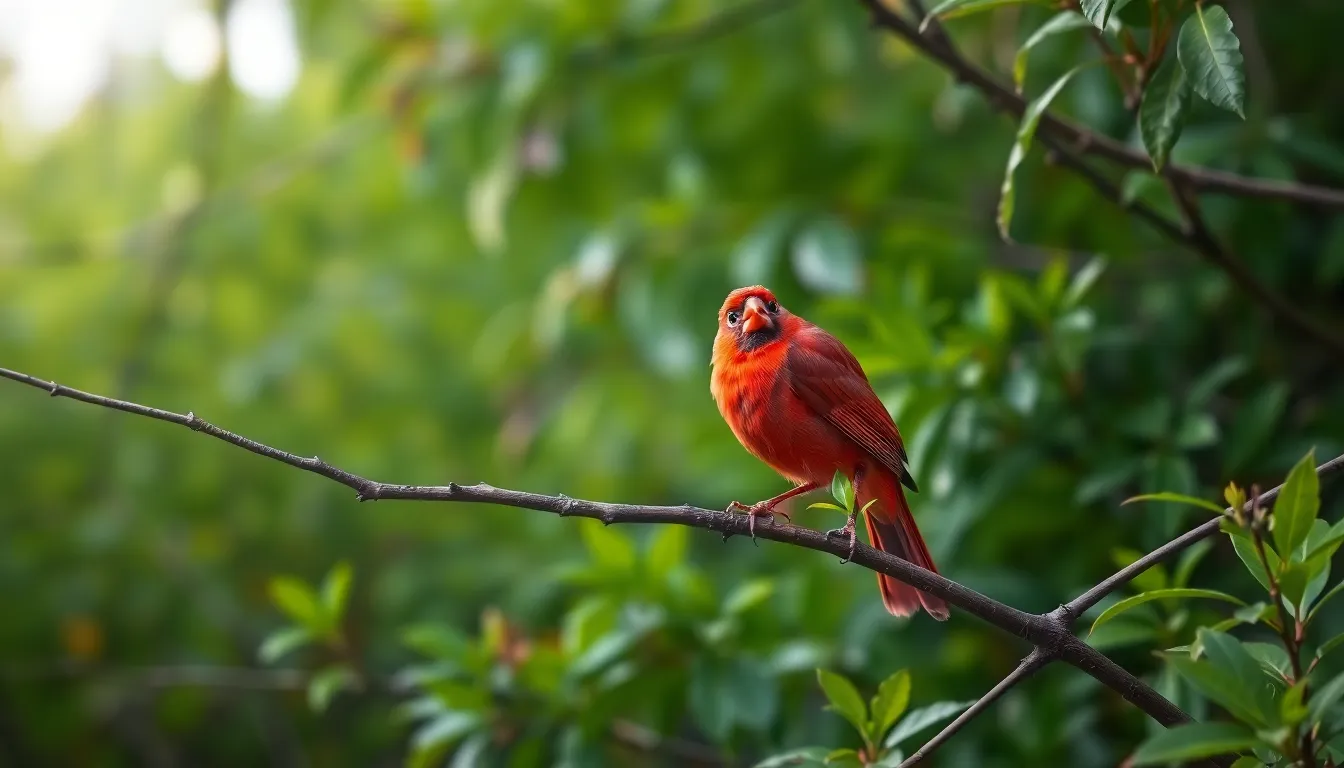
Red birds occupy diverse habitats across North America, from dense forests to suburban gardens. Their distribution patterns reflect exact environmental requirements and seasonal behavioral adaptations.
Preferred Environments
Northern Cardinals thrive in woodland edges, brushy areas, and residential landscapes throughout eastern North America. These adaptable birds favor dense shrubs and undergrowth that provide nesting sites and protective cover from predators.
Summer Tanagers inhabit mature deciduous and mixed forests across the southeastern United States. They prefer oak-pine woodlands with open canopies that support abundant insect populations, particularly their preferred prey of bees and wasps.
Scarlet Tanagers occupy mature deciduous forests with tall canopy trees throughout eastern North America. These birds select habitats with dense foliage cover at heights between 20-60 feet, where they can effectively hunt caterpillars and other insects.
Red-winged Blackbirds establish territories in wetland environments including marshes, swamps, and cattail-lined ponds. Males defend territories averaging 0.25 acres in prime wetland habitats, while also adapting to agricultural fields and roadside ditches near water sources.
| Species | Primary Habitat | Secondary Habitat | Territory Size |
|---|---|---|---|
| Northern Cardinal | Woodland edges | Suburban gardens | 2-10 acres |
| Summer Tanager | Oak-pine forests | Mixed woodlands | 3-8 acres |
| Scarlet Tanager | Mature deciduous forests | Forest clearings | 4-12 acres |
| Red-winged Blackbird | Wetlands | Agricultural fields | 0.25 acres |
Migration Patterns
Summer Tanagers undertake extensive migrations covering 3,000-5,000 miles between breeding grounds in North America and wintering areas in Central and South America. These birds depart their breeding territories in August and September, following flyways through Mexico and Central America.
Scarlet Tanagers migrate even greater distances, traveling 4,000-6,000 miles to reach wintering grounds in the Amazon Basin of South America. Their migration timing coincides with peak insect availability, departing North America in late August through October.
Northern Cardinals remain year-round residents throughout their range, establishing permanent territories that they defend across all seasons. Some northern populations may shift southward during severe winter weather, but these movements rarely exceed 100 miles from their breeding areas.
Red-winged Blackbirds display partial migration patterns, with northern populations moving south during winter months while southern birds remain resident year-round. Males often return to breeding territories 2-4 weeks before females in early spring, establishing dominance hierarchies before the mating season begins.
Red Bird Behavior and Diet
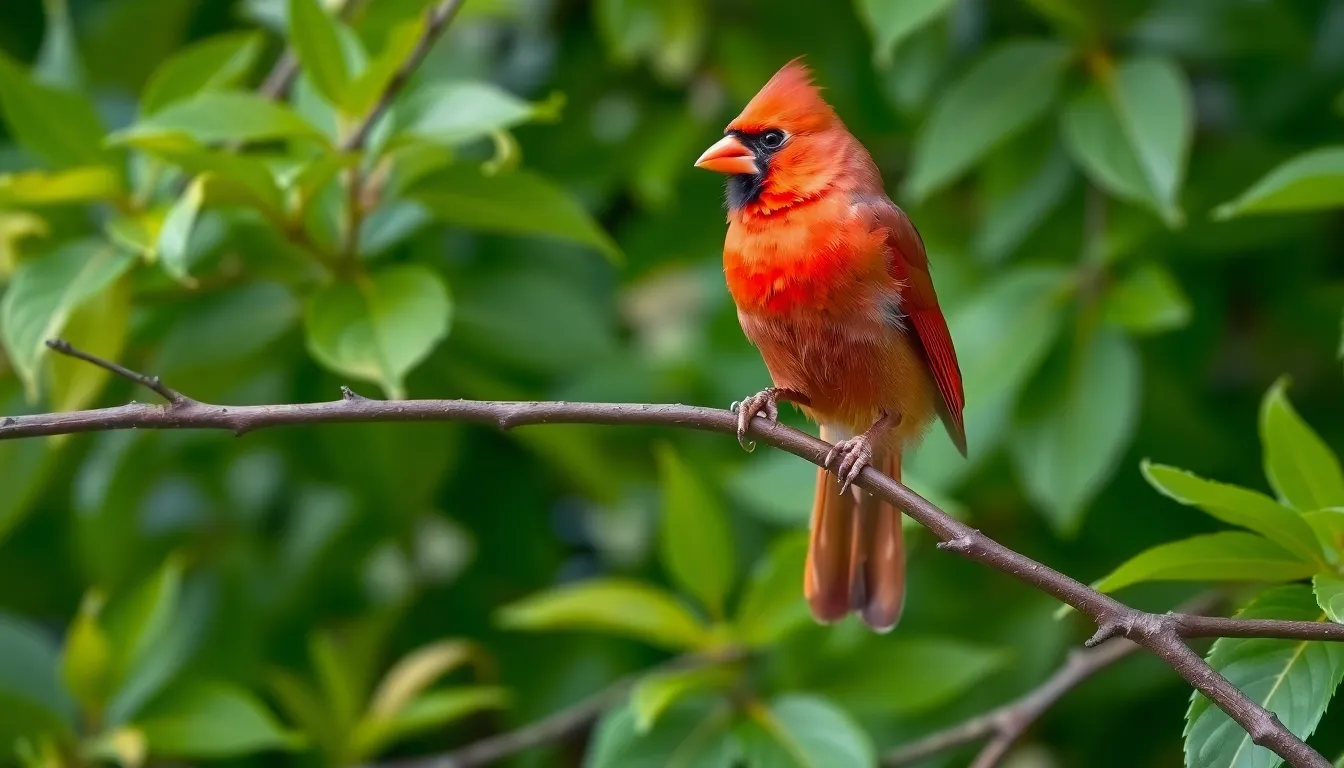
Red birds demonstrate fascinating behavioral adaptations that directly correlate with their vibrant plumage and ecological roles. Our examination of their feeding patterns and reproductive strategies reveals complex interactions between diet, habitat selection, and breeding success.
Feeding Habits
Northern Cardinals consume approximately 75% plant matter and 25% insects during peak feeding seasons. Seeds from sunflower plants, safflower, and cracked corn comprise their primary food sources, while caterpillars, beetles, and grasshoppers supplement their protein requirements during breeding periods.
Summer Tanagers specialize in consuming bees and wasps, removing the stingers by beating their prey against branches before consumption. Fruits like mulberries, blackberries, and figs constitute 60% of their diet during autumn migration periods, providing essential energy reserves for their journey to Central America.
Scarlet Tanagers feed predominantly on caterpillars during spring breeding seasons, consuming over 300 insects daily when feeding nestlings. Oak trees support their foraging behavior as they learn moth larvae and beetle grubs from bark crevices, while serviceberries and elderberries attract them during late summer months.
Red-winged Blackbirds exhibit omnivorous feeding patterns with aquatic insects, small fish, and amphibians forming 40% of their diet in wetland habitats. Seeds from cattails, sedges, and wild rice provide carbohydrate energy, particularly during winter months when protein sources become scarce.
| Species | Primary Food Sources | Feeding Method | Daily Intake |
|---|---|---|---|
| Northern Cardinal | Seeds (75%), insects (25%) | Ground foraging, branch gleaning | 8-12 grams |
| Summer Tanager | Bees/wasps (40%), fruits (60%) | Aerial catching, fruit picking | 15-20 grams |
| Scarlet Tanager | Caterpillars (70%), fruits (30%) | Canopy gleaning, hovering | 12-18 grams |
| Red-winged Blackbird | Insects (60%), seeds (40%) | Marsh probing, ground picking | 20-25 grams |
Nesting and Breeding
Cardinals construct cup-shaped nests using twigs, bark strips, and grasses in dense shrubs 3-10 feet above ground. Females lay 2-5 pale blue eggs with brown speckles between March and August, incubating them for 11-13 days while males provide territorial defense and food delivery.
Summer Tanagers build shallow platform nests on horizontal branches 10-35 feet high in oak and pine trees. Their 3-4 pale blue eggs with brown markings require 12-14 days of incubation, with both parents sharing feeding duties once chicks hatch in late May through July.
Scarlet Tanagers weave loose cup nests using rootlets and grass stems on oak branch forks 20-50 feet above ground. Females incubate 3-5 pale blue eggs with brown spots for 13-14 days, while males establish territories spanning 2-6 acres during April breeding initiation.
Red-winged Blackbirds create deep cup nests woven around cattail stems or willow branches 2-8 feet above water surfaces. Males maintain polygamous relationships with 2-15 females, each producing 3-4 pale blue eggs with black markings that require 10-12 days of incubation from April through July.
Monogamous pair bonds characterize Cardinals and tanager species, lasting entire breeding seasons with some Cardinals maintaining partnerships across multiple years. Polygamous Red-winged Blackbirds establish complex social hierarchies where dominant males control prime wetland territories containing multiple female nesting sites.
How to Attract Red Birds to Your Yard
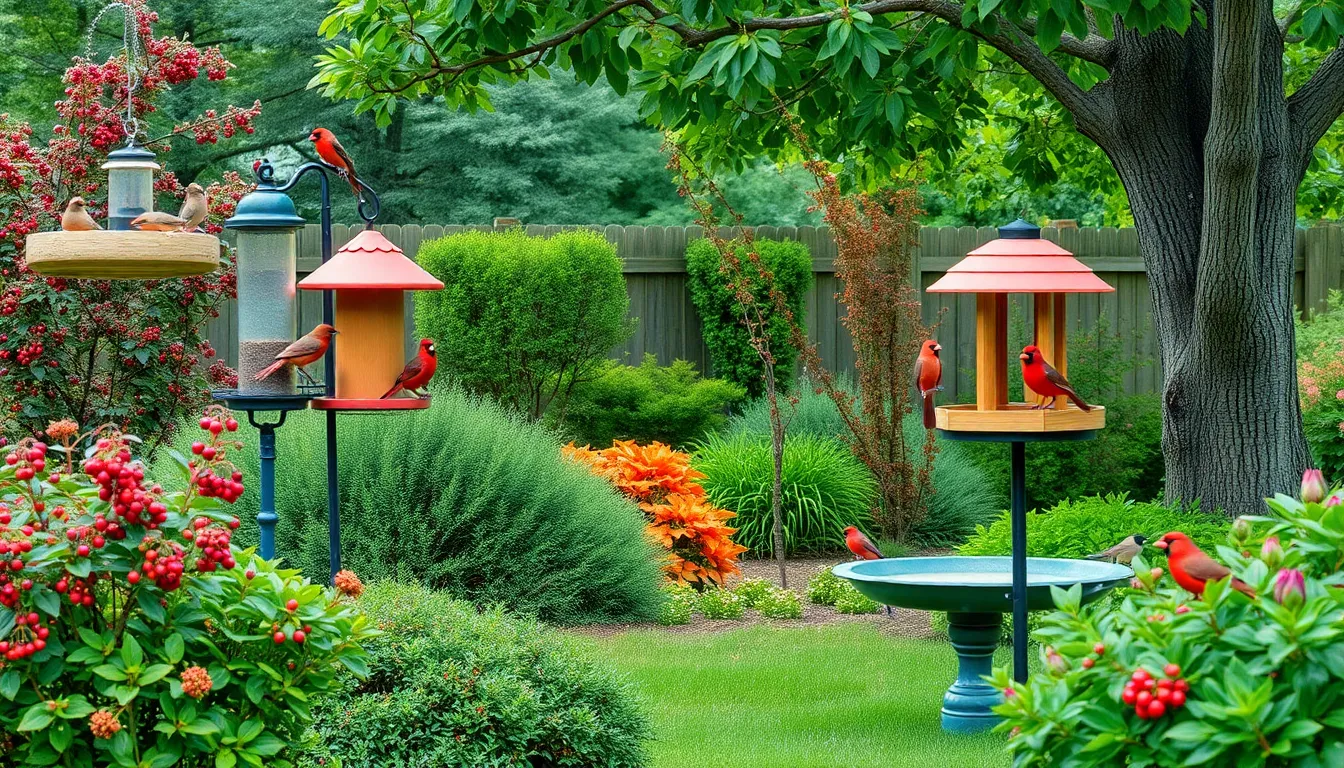
Creating a welcoming habitat for red birds transforms your outdoor space into a vibrant wildlife sanctuary. Strategic placement of feeders and environmental enhancements draws these magnificent creatures consistently to your property.
Best Bird Feeders and Food
Tube feeders filled with black oil sunflower seeds attract Northern Cardinals most effectively throughout the year. Platform feeders positioned 5-7 feet above ground provide Cardinals with comfortable feeding access while accommodating their larger size. Safflower seeds offer an excellent alternative that Cardinals prefer while deterring unwanted squirrels from monopolizing feeding stations.
Suet feeders containing high-fat content foods appeal to Summer Tanagers and Scarlet Tanagers during migration periods. These specialized feeders work best when positioned near mature trees where tanagers typically forage for insects. Fresh or dried mealworms scattered on platform feeders supplement the protein requirements of all red bird species.
Red-winged Blackbirds gravitate toward mixed seed blends containing millet, cracked corn, and nyjer seeds. Ground feeding stations placed near water sources accommodate their natural foraging behaviors in wetland environments. Fruit offerings like halved oranges and grape pieces attract tanagers during spring and summer months.
| Bird Species | Primary Food Source | Optimal Feeder Type | Placement Height |
|---|---|---|---|
| Northern Cardinal | Black oil sunflower seeds | Platform feeder | 5-7 feet |
| Summer Tanager | Suet and mealworms | Suet feeder | 6-8 feet |
| Scarlet Tanager | Suet and fruit pieces | Platform feeder | 8-10 feet |
| Red-winged Blackbird | Mixed seeds and millet | Ground feeder | 1-3 feet |
Creating the Ideal Environment
Dense shrubs and thickets provide essential nesting sites that Cardinals require for successful breeding. Native berry-producing plants like elderberry, dogwood, and sumac offer natural food sources while creating protective cover. These plantings establish the foundation for a red bird friendly industry.
Water features ranging from shallow birdbaths to small fountains serve multiple functions for red bird attraction. Moving water creates audible signals that draw birds from considerable distances while providing drinking and bathing opportunities. Position water sources within 10 feet of protective vegetation to ensure safety during vulnerable moments.
Mature trees with dense canopies appeal to Scarlet Tanagers and Summer Tanagers seeking insects among the leaves. Oak, maple, and hickory trees support the caterpillar populations that tanagers consume extensively during breeding season. Plant these species in clusters to replicate the forest edge habitats red birds prefer.
Open lawn areas adjacent to wooded sections create the transitional zones where Cardinals thrive. These edge environments provide foraging opportunities while maintaining quick escape routes to protective cover. Avoid excessive landscaping that eliminates natural ground cover and leaf litter where red birds search for insects.
Chemical-free yard maintenance preserves the insect populations that sustain red bird communities throughout the year. Pesticide applications eliminate the protein sources essential for successful reproduction and chick development. Organic gardening practices support the network balance that maintains healthy red bird populations.
Red Bird Symbolism and Cultural Significance
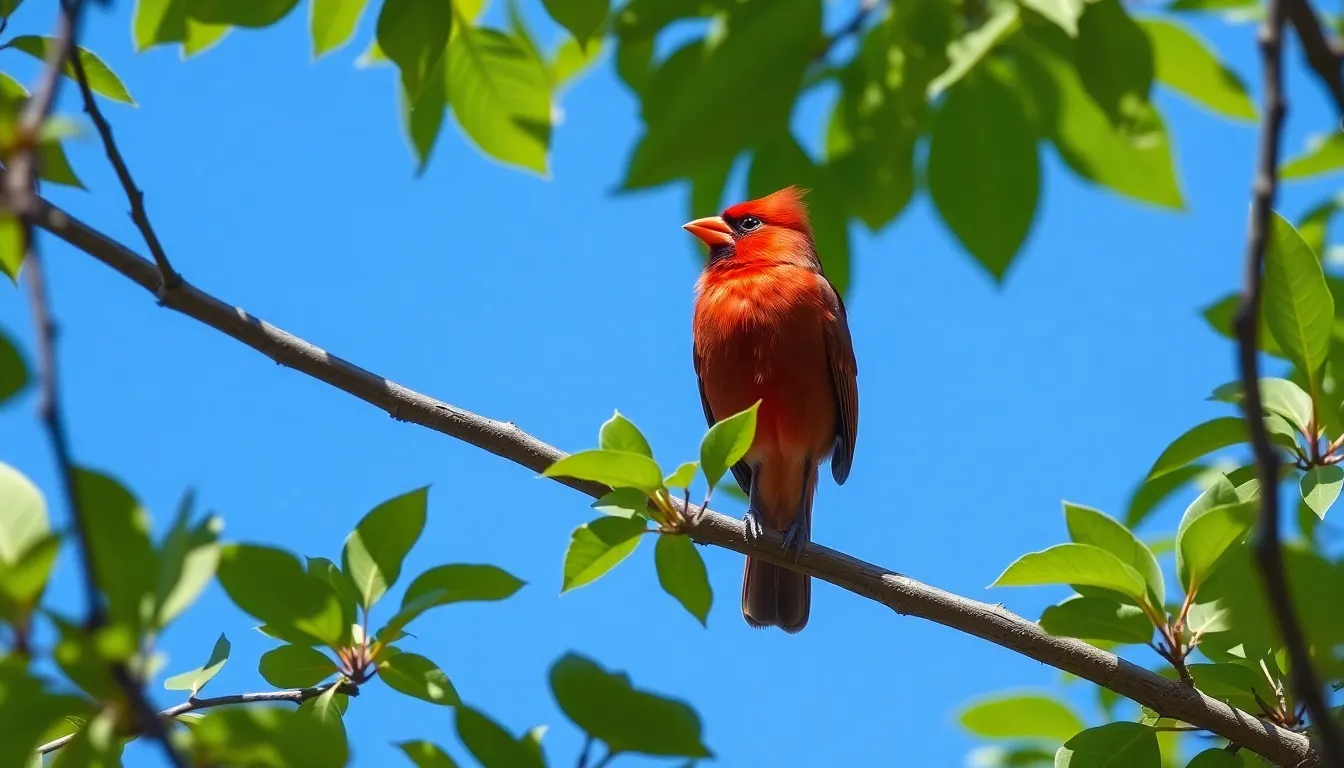
Red birds carry profound symbolic meaning across diverse cultures worldwide. Native American traditions view the cardinal as a messenger between the physical and spiritual realms, representing renewal, relationships, and monogamy. Cherokee legends describe the cardinal’s red plumage as a symbol of the sun’s life-giving power, while other tribes associate red birds with protection and good fortune.
Christianity embraces red birds as powerful religious symbols, particularly the Northern Cardinal. Catholics often interpret cardinal sightings as visits from deceased loved ones or divine messengers. The bird’s vibrant red coloration represents the blood of Christ, passion, and spiritual devotion. Biblical references to red birds appear in scriptures describing God’s care for all creatures.
Eastern philosophies incorporate red bird symbolism differently than Western traditions. Chinese culture associates red birds with prosperity, joy, and happiness, viewing them as harbingers of good luck and positive energy. Japanese traditions connect red birds to passion, energy, and life force, while Feng Shui practices place red bird imagery in southern areas of homes to enhance fame and reputation.
Literature and folklore feature red birds as recurring motifs throughout human history. Shakespeare referenced red birds as symbols of love and passion in multiple works. Contemporary literature uses red bird imagery to represent hope, transformation, and spiritual awakening. Folk tales from various cultures describe red birds as guides for lost souls or bearers of important messages.
Modern interpretations of red bird symbolism continue evolving in popular culture. Greeting cards featuring cardinals represent comfort during times of grief and loss. Sports teams adopt red bird mascots to symbolize strength, determination, and team spirit. Memorial gardens commonly include red bird statuary and plantings to honor deceased individuals.
Regional cultural variations create unique red bird meanings across different communities. Southern United States traditions particularly revere the Northern Cardinal as their state bird in seven states. Midwestern folklore connects red bird sightings to weather predictions and seasonal changes. Western cultures focus more on red birds as symbols of passion and romantic love.
| Culture | Red Bird Symbolism | Associated Meanings |
|---|---|---|
| Native American | Spiritual messenger | Renewal, protection, monogamy |
| Christianity | Divine messenger | Faith, devotion, eternal life |
| Chinese | Prosperity symbol | Good luck, happiness, joy |
| Japanese | Life force | Energy, passion, vitality |
| Celtic | Otherworld messenger | Magic, prophecy, transformation |
Art and architecture frequently incorporate red bird motifs across various time periods. Medieval illuminated manuscripts feature red birds as decorative elements symbolizing divine love. Victorian era artwork used red birds to represent romantic passion and courtship. Contemporary artists continue using red bird imagery to convey themes of hope, freedom, and spiritual connection.
Psychological interpretations of red bird symbolism connect to human emotional responses. Color psychology research indicates that red stimulates feelings of excitement, energy, and passion. Bird symbolism represents freedom, transcendence, and spiritual elevation. Combined red bird imagery triggers powerful emotional associations with love, hope, and transformation in human consciousness.
Photography Tips for Red Birds
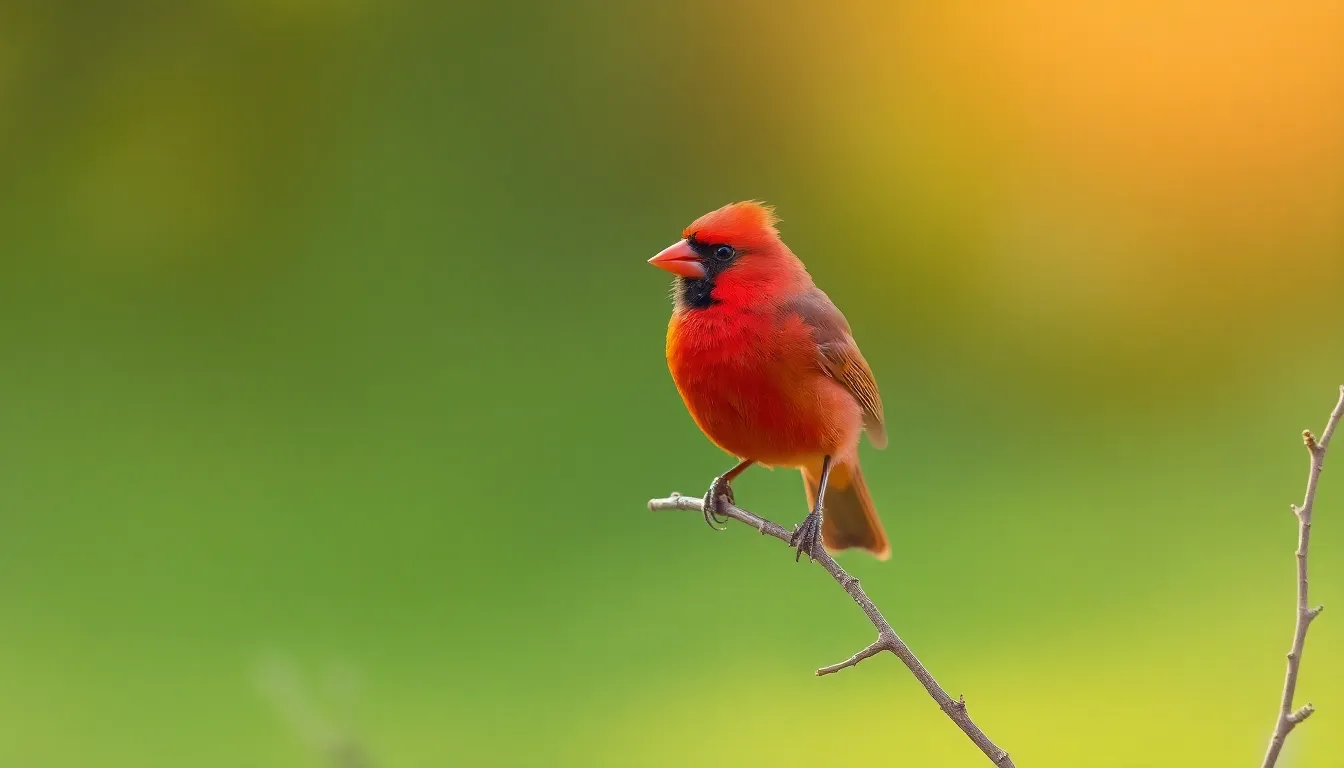
Photographing red birds requires exact techniques that account for their vibrant plumage and behavioral patterns. The brilliant crimson coloration of cardinals and tanagers can overwhelm camera sensors if exposure isn’t properly managed. We recommend shooting in RAW format to capture the full ever-changing range of red pigmentation.
Camera Settings for Red Bird Photography
Aperture settings between f/5.6 and f/8 provide optimal depth of field for red bird portraits. ISO values of 400-800 work best in most lighting conditions while maintaining clean image quality. Shutter speeds of 1/500 second or faster freeze the quick movements of cardinals and tanagers during feeding activities.
Manual exposure mode gives photographers complete control over red bird captures. Spot metering prevents the camera from being fooled by bright red plumage against darker backgrounds. We suggest underexposing by 1/3 to 2/3 stops to preserve detail in the red feathers and prevent blown highlights.
Optimal Lighting Conditions
Early morning golden hour creates warm light that complements red bird coloration without washing out feather details. Overcast skies provide even illumination that prevents harsh shadows on red plumage. Direct sunlight can bleach red colors and create unflattering contrasts between light and shadow areas.
Backlighting transforms red birds into stunning silhouettes when positioned between the photographer and light source. Side lighting reveals texture in cardinal crests and tanager wing patterns. Diffused window light works exceptionally well for photographing red birds at backyard feeders.
Composition Techniques
Rule of thirds placement positions red birds at intersection points for visually appealing compositions. Negative space around the subject emphasizes the striking red coloration against neutral backgrounds. Eye level positioning creates intimate connections between viewers and red bird subjects.
Perching branches add natural framing elements that complement red bird photography. Clean backgrounds eliminate distractions from vibrant plumage colors. We recommend using longer focal lengths (200-400mm) to maintain comfortable distances while achieving tight crops.
Behavioral Photography Opportunities
| Red Bird Species | Best Photo Timing | Ideal Behaviors |
|---|---|---|
| Northern Cardinal | Dawn and dusk | Crest displays, feeding |
| Summer Tanager | Mid morning | Bee catching, bathing |
| Scarlet Tanager | Early morning | Caterpillar hunting |
| Red-winged Blackbird | Breeding season | Territory displays |
Nesting activities provide dramatic red bird photography opportunities during spring months. Male cardinals feeding females create touching behavioral moments. Territorial displays of red-winged blackbirds showcase their distinctive shoulder patches.
Feeding behaviors offer predictable photo opportunities when red birds visit consistent food sources. Bathing sequences capture ever-changing action as water droplets highlight red feather textures. Flight shots require continuous autofocus modes and high frame rates to track fast-moving subjects.
Equipment Recommendations
Telephoto lenses between 300-600mm allow close red bird photography without disturbing subjects. Tripods with gimbal heads provide steady support for heavy telephoto equipment. Fast autofocus systems track red birds as they move between perches and feeding stations.
External flash units with diffusers fill shadows in red bird plumage during darker conditions. Remote camera triggers enable photographers to capture red bird behavior from concealed positions. Weather protection keeps equipment safe during extended outdoor photography sessions.
Conclusion
Red birds continue to enchant us with their vibrant beauty and remarkable adaptations that’ve evolved over millions of years. These stunning creatures serve as living reminders of nature’s artistry while playing crucial roles in maintaining healthy ecosystems through seed dispersal and insect control.
Whether you’re drawn to their symbolic meanings or simply captivated by their striking appearance observing red birds offers endless opportunities for discovery. From creating bird-friendly spaces in our backyards to capturing their beauty through photography we can deepen our connection with these magnificent species.
As we face environmental challenges it’s more important than ever to appreciate and protect the habitats that support red bird populations. By understanding their needs and behaviors we become better stewards of the natural industry they call home.
Frequently Asked Questions
What are red birds and what makes them special?
Red birds are a diverse group of avian species characterized by vibrant crimson, scarlet, or rust-colored plumage. They include species like the Northern Cardinal, Summer Tanager, Scarlet Tanager, and Red-winged Blackbird. Their striking red coloration comes from carotenoid compounds in their diet, and males typically display more intense colors than females, especially during breeding season.
Which red bird species are most common in North America?
The four primary red bird species in North America are the Northern Cardinal, Summer Tanager, Scarlet Tanager, and Red-winged Blackbird. Each has distinct characteristics: Cardinals have brilliant red plumage year-round, Summer Tanagers are rose-red and eat bees, Scarlet Tanagers are scarlet with black wings, and Red-winged Blackbirds are black with red shoulder patches.
Where do red birds typically live and migrate?
Red birds occupy diverse habitats from forests to suburban gardens. Northern Cardinals are year-round residents in woodland edges and residential areas. Summer and Scarlet Tanagers migrate extensively to Central and South America. Red-winged Blackbirds prefer wetlands and exhibit partial migration, with northern populations moving south during winter months.
What do red birds eat and how do they feed?
Red birds have varied diets depending on species. Northern Cardinals primarily eat seeds and insects, Summer Tanagers specialize in bees and wasps, Scarlet Tanagers focus on caterpillars and fruit, while Red-winged Blackbirds are omnivorous, consuming aquatic insects and seeds. Their feeding habits are closely linked to their habitat preferences and seasonal availability.
How can I attract red birds to my yard?
Create a welcoming habitat with strategic feeder placement, dense shrubs for nesting, and water features. Use tube feeders for Cardinals with sunflower seeds, suet feeders for tanagers, and platform feeders for Red-winged Blackbirds. Maintain a chemical-free yard to support healthy insect populations and provide natural food sources for these beautiful birds.
What is the symbolic meaning of red birds in different cultures?
Red birds hold deep cultural significance across various traditions. Native Americans view cardinals as spiritual messengers representing renewal, while Christianity sees them as divine symbols of faith. Eastern philosophies connect red birds to prosperity and joy. In literature and folklore, they symbolize love, hope, and transformation, evoking powerful emotional associations.
What are the best photography tips for capturing red birds?
Shoot in RAW format with aperture between f/5.6-f/8, ISO 400-800, and shutter speeds of 1/500 second or faster. Use early morning light or overcast conditions to avoid harsh shadows. Apply the rule of thirds for composition and position yourself at eye level. Each species has optimal photography times based on their feeding and behavioral patterns.
How do male and female red birds differ in appearance?
Male red birds typically exhibit more vibrant coloration than females, especially during breeding season. This sexual dimorphism serves evolutionary purposes: males display bright colors to attract mates, while females have subdued hues for camouflage during nesting. Some species like Cardinals maintain consistent coloration year-round, while tanagers undergo seasonal plumage changes.

